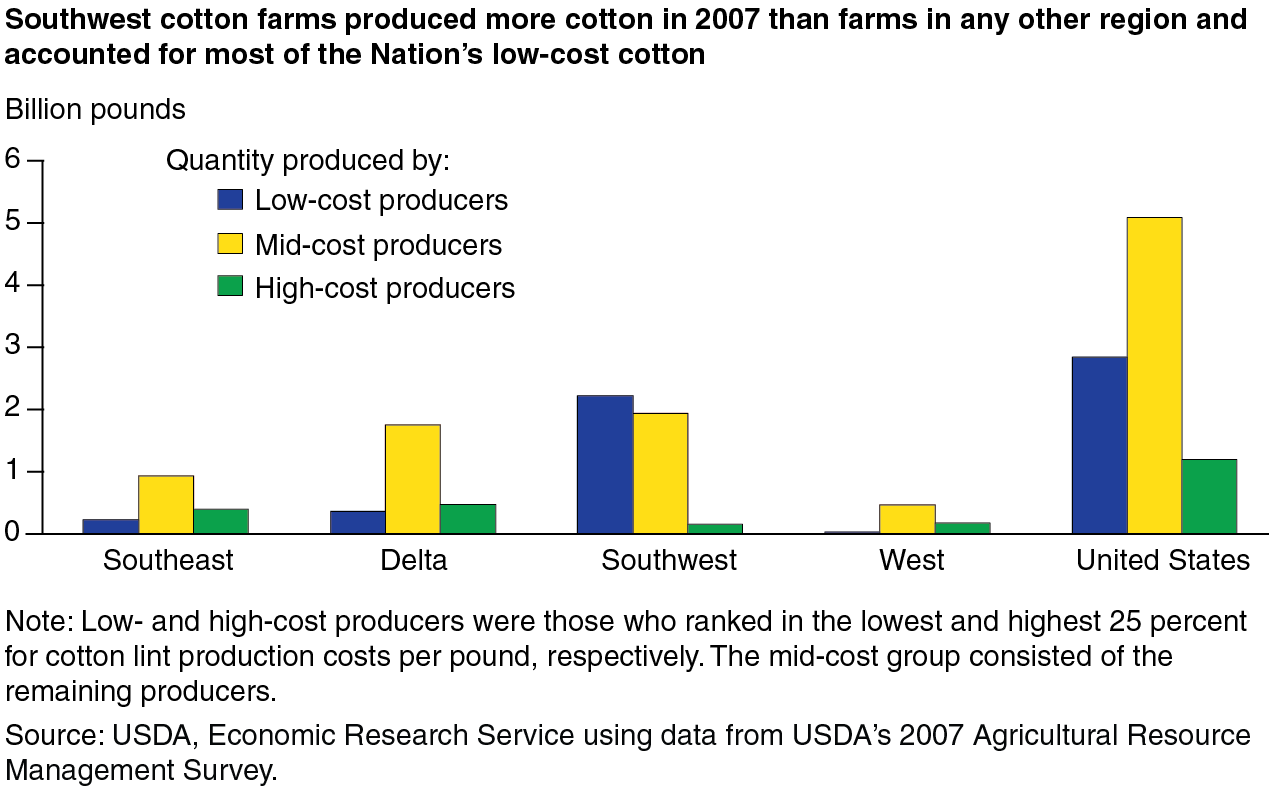Characteristics of U.S. Cotton Farms Vary Widely
- by Linda Foreman
- 2/21/2013
In the United States, cotton is a major field crop that generates significant cash receipts for farm producers, exceeded only by corn, soybeans, wheat, and greenhouse products. Data from the most recent (2007) cotton version of USDA’s Agricultural Resource Management Survey (ARMS) reveal that U.S. cotton farms are not homogeneous--operators have different characteristics and usedifferent production practices. To examine these differences, ERS classified cotton farms by cotton production costs, region, cotton enterprise size (cotton acres), and farm size (gross annual sales).
Cotton producers in the United States were ranked according to their production costs per pound of cotton lint in 2007. The 25 percent of producers with the lowest and highest cotton costs per pound were grouped respectively in the low- and high-cost groups while the rest were classified as mid-cost producers. Operating and ownership costs ranged from an average of $0.44 per pound among low-cost producers to $1.02 per pound for high-cost producers. Low-cost producers, who accounted for 31 percent of the Nation’s total cotton production, all had gross value of cotton production, based on harvest month price, that exceeded their production costs. In contrast,among the high-cost producers, who accounted for 13 percent of U.S. cotton production, only 4 percent covered their costs per pound from harvest month prices. Low-cost producers typically applied less inputs, such as seed and fertilizers, and made fewer trips across their cotton fields, which contributed to their low costs per pound. Low-cost producers tended to have less commodity diversification, slightly larger cotton enterprises, and smaller whole farm operations. Most low-cost producers were located in the Southwest.
According to ARMS data, neither cotton enterprise size nor farm size had much impact on average costs per planted cotton acre in 2007. Many operators with small cotton operations held down their machinery ownership costs by relying on custom workers for harvesting cotton. Custom workers supply labor and use their own machinery.
Most cotton production takes place on very large farms with gross annual sales of $1 million or more. These farms do not always have a large number of cotton acres. The Southwest (primarily Texas) is a major cotton production region. In 2007, this region experienced unusually good cotton growing conditions and accounted for 47 percent of U.S. production. However, Southwest producers experience more risk over time: they are more specialized in cotton--they produce few alternative commodities, and cotton accounts for a large share of their total value of agricultural production--and their cotton yields are volatile. These producers are more likely than thosein other regions to cover their risk by purchasing crop insurance.
This article is drawn from:
- Foreman, L. (2012). Characteristics and Production Costs of U.S. Cotton Farms, 2007. U.S. Department of Agriculture, Economic Research Service. EIB-104.


